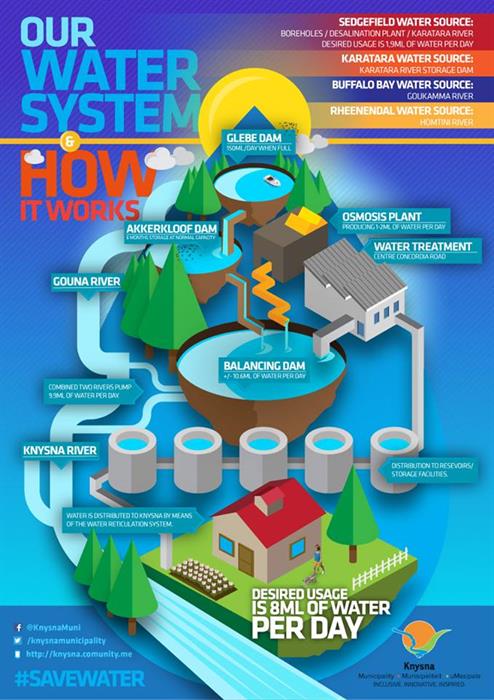KNYSNA NEWS - While the mountains above our rivers are seen as the main catchment area there is another area that has the potential to produce enough water to cover all our water needs as a town.
Local NGO BioWise director Sue Swain explains: “Last year we had 495mm of rain which is the least we’ve had in 20 years, so we are definitely experiencing a dry period. However if one looks at the potential of harvesting, storing and use of rain from roof surfaces, even this amount of rain would be enough to provide our annual water needs.”
Harvesting potential
“The surface area for Knysna town is about 64sq km, including Belvidere and the Brenton area from Ward 5, but excluding Rheeendal. Assuming 50% of that land is building development and assuming an average 30% building footprint per plot, the roof surface area of Knysna would be around 9.6sq km. The rainfall on these Knysna roofs last year would have been 4.7-billion litres," Swain explains.
According to the municipality, the town consumes up to 4.3-billion litres of water annually, so the rain from the roof surfaces alone could meet the town’s annual needs. Swain points out that Knysna’s target for water consumption is actually 2.9-billion litres a year, so simply by harvesting the rain, the town will have more rain than what it needs.
“We know that Knysna’s current infrastructure needs urgent maintenance and even replacement. With so much water lost through leaking pipes and pipe bursts, the closer to home we bring water harvesting and storage, the better,” says Swain.

Knysna’s water troubles are often blamed on insufficient storage capacity, but Swain says another or bigger dam and more pipe stations are not necessarily the answer. “If one considers the financial and environmental costs of these, the easier solution would be to change our thinking and start harvesting. Mimic nature by not wasting any natural resources, like rain, which is supplied freely and with compliments right on our doorstep, literally.”
Thirsty land
She says with the current drought, it is estimated that more than 50mm of rain would be needed in the region before run-off would occur. “The land surrounding the rivers is thirsty, so most of the rainfall will first seep into the ground and only what is left over will run off into the rivers. This is evidenced in the dams in our surrounding rural properties that remain very low, despite recent rains."
Swain says this is not the case in the urban areas. “All the rain that falls on our hard surfaces such as rooftops, streets and paving is immediately available, and yet, the design of town planning systems is to rush away all of this stormwater, treating it more as a nuisance than as the freely available resource it is."
The potential for water abundance exists, she emphasises. “Harvest and store rain from all roof surface areas; redirect stormwater into the earth to recharge groundwater; recycle our wastewater and do not pollute any water.”

'We bring you the latest Knysna, Garden Route news'
















